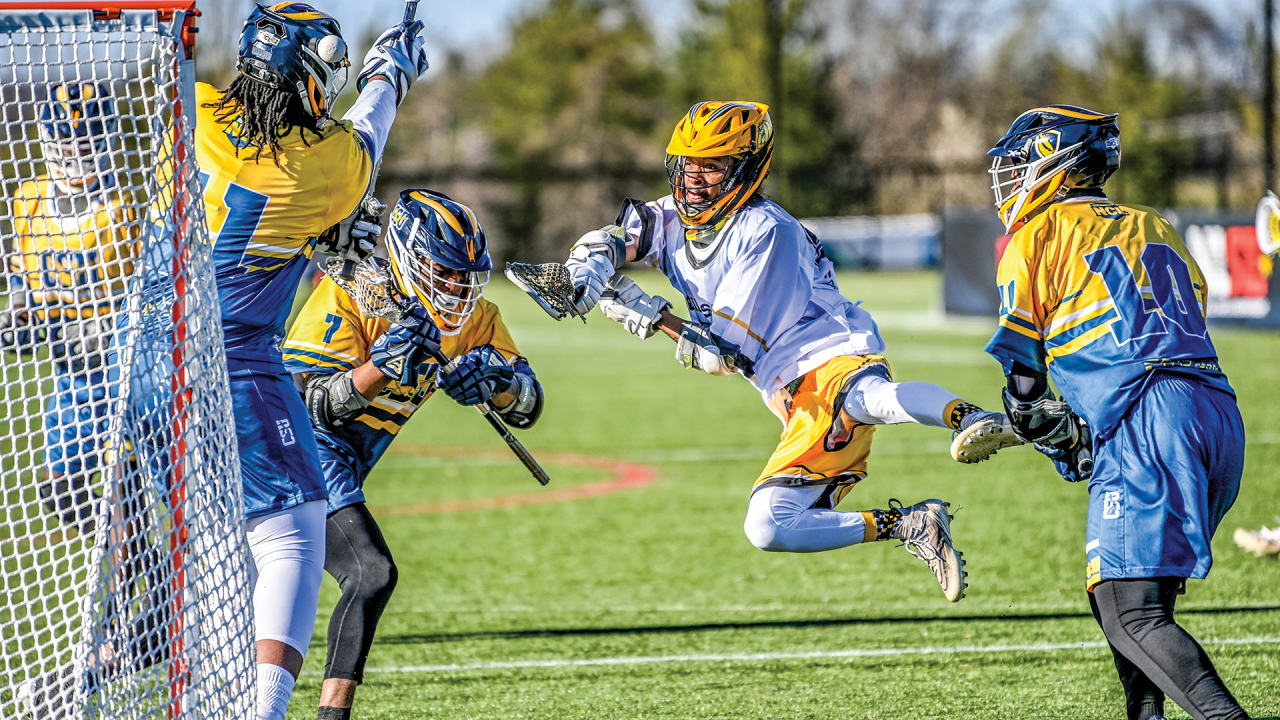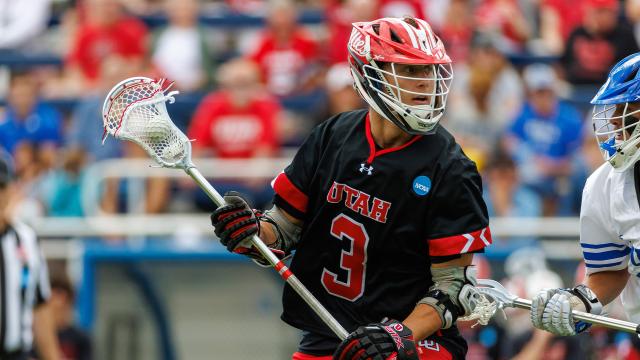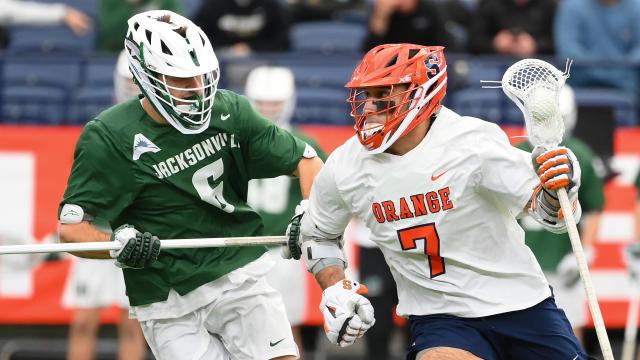
How to Get More Black Athletes Playing Lacrosse
Bryan Beverly played for the illustrious Morgan State men’s lacrosse program in the mid-1970s and operates a Facebook group that’s committed to preserving the Ten Bears legacy.
In 2021, USA Lacrosse Magazine and Blaxers Blog named him one of “The Most Influential Figures in Black Lacrosse History.”
In this op-ed, Beverly presents a model for growing the game such that marginalized populations can leverage existing sports programs to initiate participation in lacrosse.
IF YOU ARE FAMILIAR WITH LACROSSE as a player, coach, referee, program manager, service provider or associated with someone in these roles, then you are aware that there are challenges in creating, sustaining and growing the presence of Black players (male and female) in the sport.
The purpose of this article is to elucidate these challenges and to provide some options for overcoming these challenges.
The challenges fall into three broad categories of prohibiting factors: cultural, economic and recruitment/retention.
CULTURAL FACTORS
At the collegiate varsity level, more so at historically Black colleges and universities (HBCU) vis-à-vis predominantly white institutions (PWI), the Black participation at the varsity level has been limited for three reasons:
- Lacrosse is perceived as a white sport and not congruent with traditional HBCU culture. Hence, lacrosse was not advancing the HBCU brand. A white sport was not a badge of honor at a Black school.
- Blacks who play lacrosse in high school do not always want to play HBCU lacrosse because the HBCU culture was not always compatible with how they were raised. Those raised in a predominantly white/multicultural environment did not always gel with the HBCU milieu.
- Predominantly white schools may be reluctant to schedule games with HBCUs. If they defeat them and the score is not competitive, then they are seen as “unfairly beating up on Black people.” If they lose, then their program quality is now seen as suspect. To prevent either scenario, it can be best to avoid scheduling the games.
ECONOMIC FACTORS
- Lacrosse is an expensive sport. On average, it takes at least $500 to outfit one male player with full equipment and apparel. Hence to have a minimum of 10 players on the field and 10 players on the sideline, it costs $10,000. There are other program expenses such as contracting referees, travel, field maintenance, trainers, insurance and security. The cost-prohibitive nature of lacrosse explains why soccer is a global sport. You need only a ball, a net and maybe some shin guards. That means that players from third-world countries can be competitive with western countries because competition is based purely on athleticism and game strategy. With lacrosse, only the economic elite can participate. Sixes, an emerging discipline of lacrosse that requires only six players pers side, is less of an economic strain but not significantly.
- Title IX requirements mean women’s programs will take priority at the collegiate level. Hence, it may be feasible to establish programs for women’s sports first and then backfill the men’s sports. But that also means that if the demand for women’s sports is low, then the men’s programs will not happen.
- Revenue-generating sports often get scholarship priority over lacrosse, which typically for HBCUs is a non-revenue sport. Which in turn makes it hard for athletic directors to frame/promote lacrosse as adding value to the HBCU.
- How lacrosse is financed may vary between public and private colleges. While both depend on alumni support, state-funded schools may vary based on tax revenue whereas private college funding may vary based on the returns on the endowment. The total cost of program ownership also includes the needs of the coaches like support for scouting games, recruitment visits, attending and sponsoring clinics, staff hiring and development, videography and technical support.
RECRUITMENT/RETENTION FACTORS
At the collegiate varsity level:
- Students often need scholarships to attend college. Managing scholarships requires a high degree of logical, mathematical and political dexterity in any sport because the level of need often exceeds the number of scholarships available.
- Students may have to drop out of college either due to poor grades or to support their families (of orientation and/or procreation).
- Students often need academic and personal support to stay focused and on track to graduate. On the other hand, colleges’ graduation rates are coming under greater scrutiny, so recruiting students who are talented but not academically strong is a tough judgment call by coaches and athletic directors.
- Students need access to quality practice and training facilities, trainers, medical support and dietitians. At HBCUs, these resources are most likely reserved for the revenue-generating sports and not lacrosse players.
- Students with exceptional ability — who want to play professionally — will likely transfer to PWIs to get exposure. Professional lacrosse leagues are highly unlikely to draft players from schools from small media markets.
OPTIONS TO INCREASE BLACK PARTICIPATION
While lacrosse has cultural, economic and administrative challenges that serve as barriers to establishing and sustaining programs, there are some viable options one can explore.
At the youth level:
- Collocate lacrosse programs with existing football, soccer and basketball programs. Specifically ask the parents and program managers if introductory lacrosse clinics and perhaps even leagues can be established with the youth already playing another sport.
- The parents and youth are already at a venue. This would just be an extra 30-60 minutes tacked on with no extra cost or travel time.
- For youth in football, using their helmets and pads would be sufficient to get started with the game. They only need sticks, gloves and a bucket of balls.
- These youth leagues are often overloaded with players who do not get much game time. This will give them an alternative, especially if they discover that their aptitude with lacrosse is stronger.
At the collegiate level:
- Start a club team and enroll it with Next Collegiate League. The league uses a sixes format with the hope of developing players in the discipline that will be played in the 2028 Olympics and has a 10-year media rights deal with Next Level Sports & Entertainment. By participating in this league with a club team, some of the barriers to entry are lowered, the sport merges onto the path of school acceptance and lays the foundation for a varsity program.
- Propose to the athletic director that spring lacrosse be placed under the football cost center (as a demonstration project for one year), such that the football players are encouraged to take up the sport as part of the spring conditioning program. This would integrate the football players with the lacrosse players as a single unit, enable the football players to get in shape and allow the coaches to discover lacrosse players who may have potential as football players (ergo Jim Brown, who was an All-American in both sports). If the lacrosse program is financed by NCL, then the main expense is anything the football players need to play lacrosse not covered by the NCL. The strategic intent here is to sell lacrosse as a vertically integrated sport that adds value to football — lacrosse as an extension of football keeps football as the most important asset and creates space for lacrosse in a non-threatening way.
CONCLUSION
In effect, the challenges to increasing the participation of Blacks in lacrosse are structural and not agentic. There are socioeconomic and political factors that make participation difficult and not the efforts of one person or even a clandestine hegemony.
From my days as one of the Morgan State Ten Bears lacrosse team members (I played in 1977 and 1978) to my board membership with the Greater Baltimore Lacrosse Foundation, the issues here are tethered to each other but still operate separately.
However, I believe that the best path forward is to not carve new paths but link lacrosse to programs that are already in place, with the hope that lacrosse will carve out its own identity and provide more Blacks opportunities to participate.
Until then, may everyone who is already associated with “The Creator’s Game” do what you can to extend the game to those who cannot reach it.
- Donate equipment.
- Sponsor a clinic.
- Lease a practice field.
- Demonstrate how to play wall ball.
- Connect with coaches from other sports.Attend a game and encourage the players on both sides.
Progress never rolls in on the wheels of inevitability. Looking forward to better times, there’s a lot of cream that needs to rise to the top.
Let’s make it happen.
Bryan Beverly
Bryan Beverly played for the illustrious Morgan State men’s lacrosse program in the mid-1970s and operates a Facebook group that’s committed to preserving the Ten Bears legacy. In 2021, USA Lacrosse Magazine and Blaxers Blog named him one of “The Most Influential Figures in Black Lacrosse History.”

Categories
Tags
Related Articles



